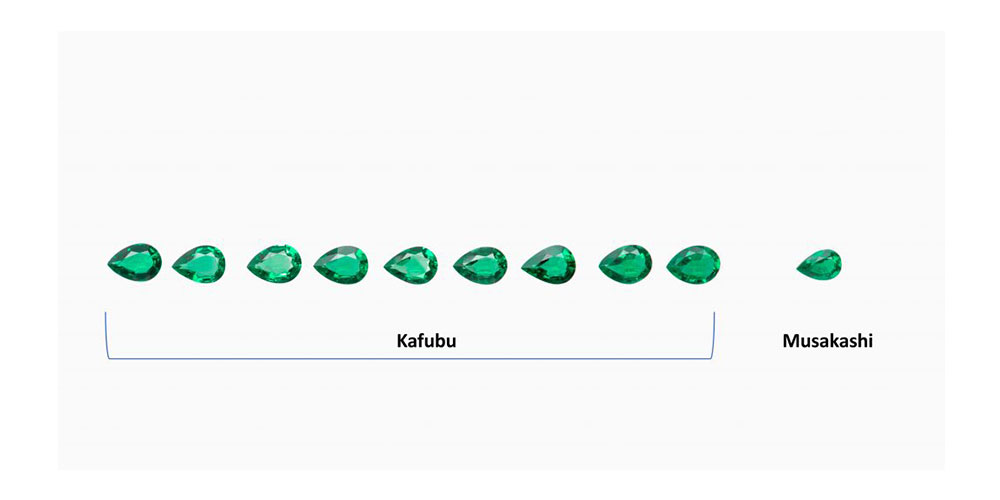Advanced testing using Laser Ablation Inductively Coupled Plasma Mass Spectrometry (LAICPMS) on an anomalous stone from a batch of 10 emeralds submitted to the Swiss Gemmological Institute SSEF has indicated that it is likely to have been sourced at Musakashi, in the Solwezi district of central Zambia. This suggests that production at that site has been increased. The other nine stones showed characteristics typical of production from the Kafubu area, where most of Zambia’s emeralds have been mined to date.
As a major source of gem-quality emeralds, for decades most of Zambia’s production has been sourced in the Kafubu area, about 45km south-west of Kitwe in the country’s Copperbelt Province. However, in early 2000, a new source of emeralds was discovered in Musakashi (Zwaan et al. 2005), about 160km west of Kitwe. But production from the latter deposit was limited, partly due to legal issues about mining concessions (Klemm 2009, 2010, Pardieu 2015).
Emeralds from the Musakashi deposit are very different in their formation and occurrence to the “classic” Zambian production from the Kafubu area, and, interestingly, in many aspects are reminiscent of Colombian emeralds. This is notable because of the presence of spiky three-phase to multi-phase inclusions, and fine hollow channels parallel to the c-axis of the crystals (Zwaan et al 2005, Saeseaw et al 2014).


Dr. Michael Krzemnicki, Director at the Swiss Gemmological Institute SSEF, said, “Studying material from new and lesser-known emerald deposits gives us greater insight into the different formation mechanisms for emerald crystallisation. This ultimately supports our work on origin determination, and also means that occasionally we have to update our findings and conclusions, when new scientific evidence is revealed.”
“Having now seen stones of very fine quality of 2-5 carats and higher from Musakashi, it is reasonable to assume that production has become more active in the area, and more of this interesting material will appear in the trade in the near future,” he added.

